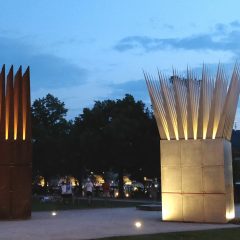What words do you want on your tombstone?
Our discussion began with a list of 35 ways to broach the subject of death, and covered traditions of death and dying from the Victorian era to present — from grooming of the deceased and medical cadaver studies to mourning fashion. The crowd was a heterogeneous mix of students, medical practitioners, retirees, and goth aficionados. The event concluded with an edifying tour of historical monument styles led by Victorian Era Connoisseur, Michael Brooks, Ph.D.
Now designated as a National Historic Landmark, Laurel Hill Cemetery was founded in 1836 by Quaker John Jay Smith as one of the nation’s pioneering garden cemeteries. In traditional Quaker style, Laurel Hill’s earliest burial plots are marked with modest, trip-hazard sized stones simply engraved with names and dates. It wasn’t until after 1837, the start of the Victorian era, that flamboyant stone monuments became prominent. Today, Laurel Hill features over 33,000 eclectic monuments, ranging from massive Egyptian obelisks, conventional tombstones, religious relics and tiny-house scaled mausoleums, to rather uncanny life-like sculptures of the deceased.
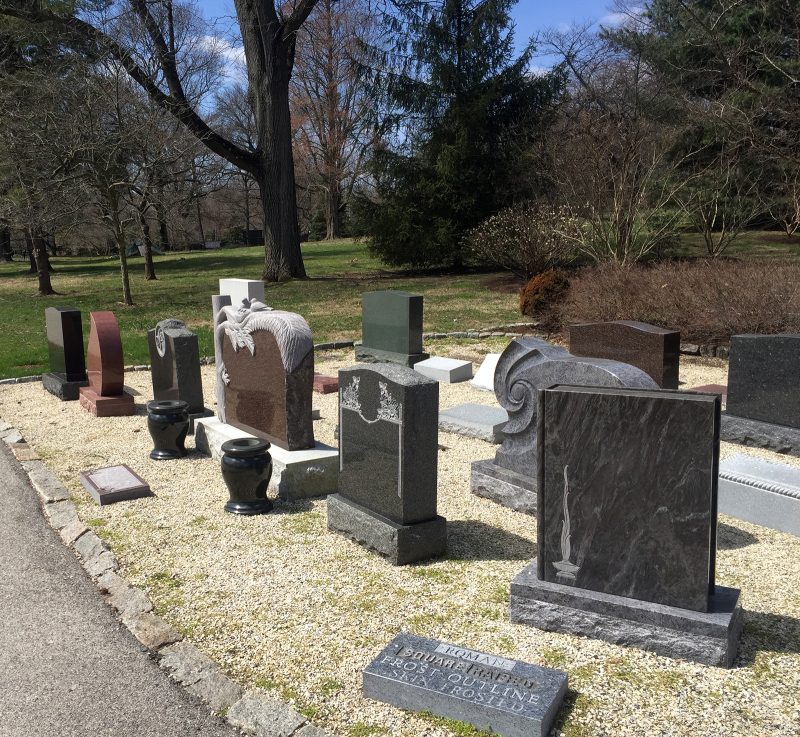
Touring the graveyard
We arrive in the Victorian section of the cemetery where an inscription “Crushed Hopes” shines like a neon sign from the stone patina on the grave of a newborn. Grave sentiments such as this were not uncommon, particularly on children’s monuments, due to mass casualties from widespread disease. Despite these despairs, 19th century monument design was heavily rooted in the symbolism of optimism and renewal (e.g., vegetation, butterflies, and other springtime creatures), as well as in the declaration of one’s homeland.
Michael points to a monument that resembles a meteorite haphazardly situated among the nearby crosses and mausoleums. Perched on top of the rock is a sculpture of an urn covered in ivy, representing immortality. Because this lad was Scottish, his grave has been marked with a cairn —the conglomerate pile of rocks historically used as burial monuments in Great Britain. Less optimistic but still exemplary of the era is the monument of Mary Barton Cooke, who died in Cairo and was interred here beneath a marble sarcophagus adorned with Romanesque ornamentation and symbolism of her Egyptian life. Among the eroded pyramid reliefs are two palm trees, representing Mary and her husband John. Mary’s tree is snapped in half — a rather grim interpretation of her state of well-being.
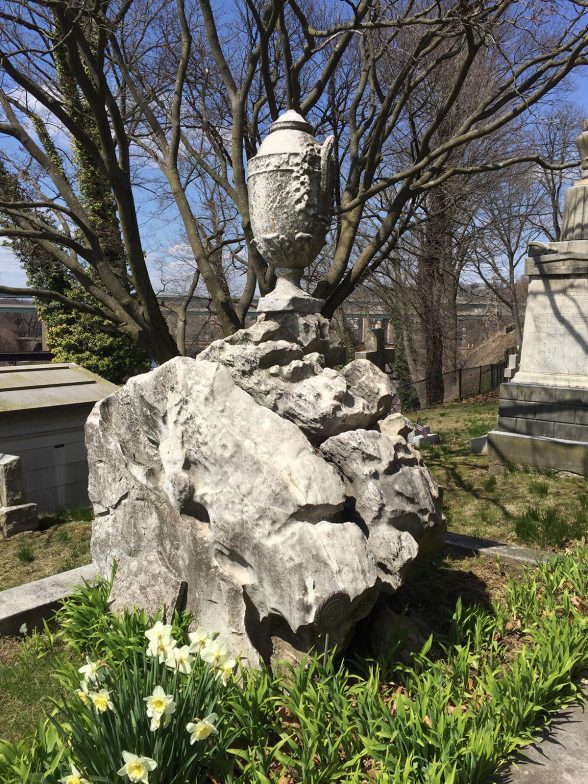
Monuments of Today
Next, we walk towards the Schuylkill where recent monuments overlook the river on terraced hills retained by the walls of sumptuous mausoleums. Symbolism in contemporary monument design is arguably less poetic as it was in the Victorian era, having evolved from references of religion and renewed hope, to a more literal and individual translation of one’s greatest contributions and passions. The monument of Phillies sportscaster, Harry Kalas, is perhaps the epitome of this trend. Resting on a prime piece of real estate, Kalas’ grave is marked with a bulbous microphone-shaped sculpture, sod from Citizens Bank Park (where the Phillies won the ’08 World Series), and folding stadium seating, awaiting visitors.
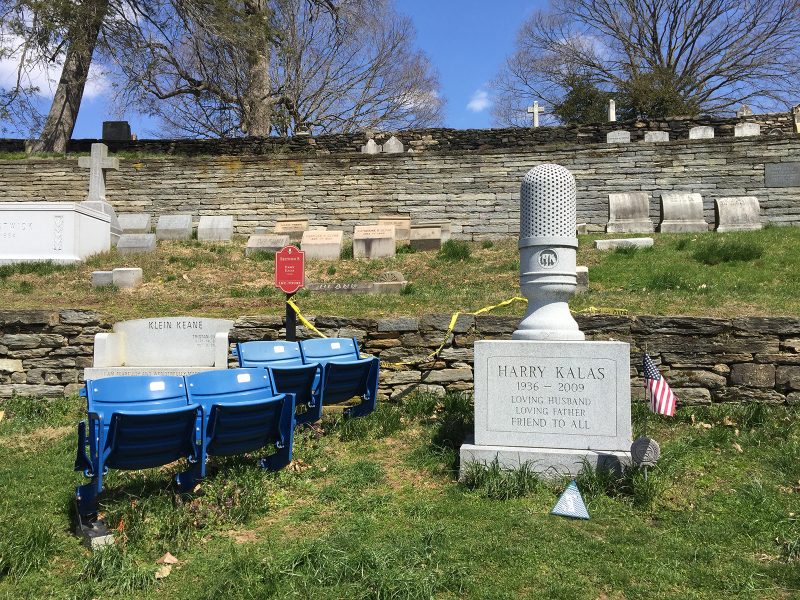
I step over a small flush stone engraved “Dancing in the Dark,” which I can only assume belongs to a die-hard fan of The Boss, in order to read a black, rectangular pillar with an inspiring Emerson quote, “Do not go where the path may lead, go where there is no path and leave a trail.” Next to it sits a modern sculpture of a forlorn figure nestled on a rock, reminiscent of Rodin’s The Thinker. I wonder where this adventurous soul must have traveled or the type of art he might have admired. In addition to exploring the cemetery’s vast picturesque landscape, one could easily spend hours lurking around the allegorical monuments of Laurel Hill, postulating stories about the lives of the deceased.
Monuments of tomorrow?
Recently, there has been a shift in burial trends from traditional interment to more ephemeral methods. According to the Cremation Association of North America (yes, that’s a thing), cremation rates in North America hit just over 50% in 2016 and continue to steadily rise. Likewise, “green” burials, where a non-embalmed body is wrapped in an “artisanal” wicker basket, pine wooden coffin, or organic shroud and lowered into a hand-dug grave, have become popular. In lieu of traditional headstones, small trees, shrubs, engraved natural stones, or GPS homing devices placed on the deceased are used to locate graves. By the end of the year, Laurel Hill will open its crematory scatter garden, and just across the river, West Laurel Hill features a Nature’s Sanctuary where one can rest amidst a native meadow and even apiaries. In the era of grave tracking apps, Michael Jackson hologram concerts, and high-demand for prime real estate, will physical grave monuments still retain their relevance?
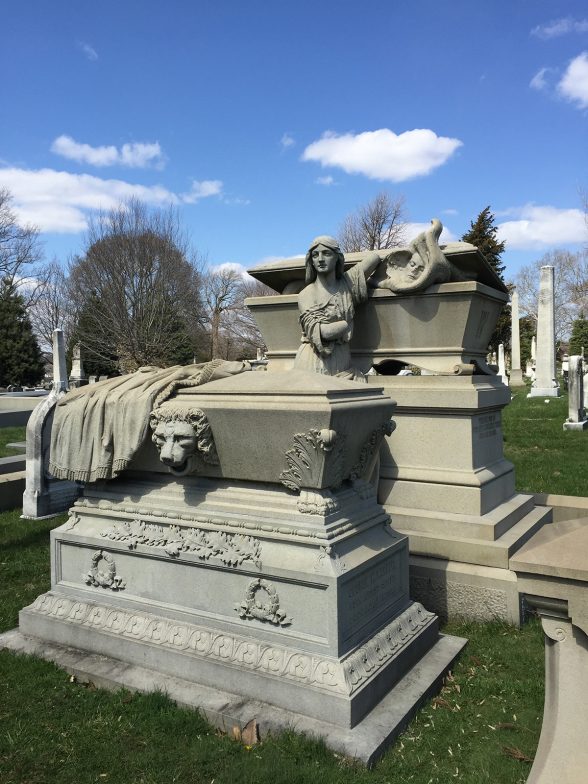
Despite current trends, Laurel Hill Program and Volunteer Coordinator, Beth Savastana, does not see monuments losing their appeal anytime soon, at least not at historic Laurel Hill. “People like to find a tangible piece of the past. If you’re buying the spot, you might as well decorate it.” In fact, Laurel Hill has a dedicated team of designers to make your wildest monument dreams a reality. In the end, whether you fancy a Darth Vader engraving, a tomato plant for visitors to snack on, or absolutely nothing at all, marking your place of eternal rest all comes down to personal preference. It’s your monument, your flair, so what will you choose?





